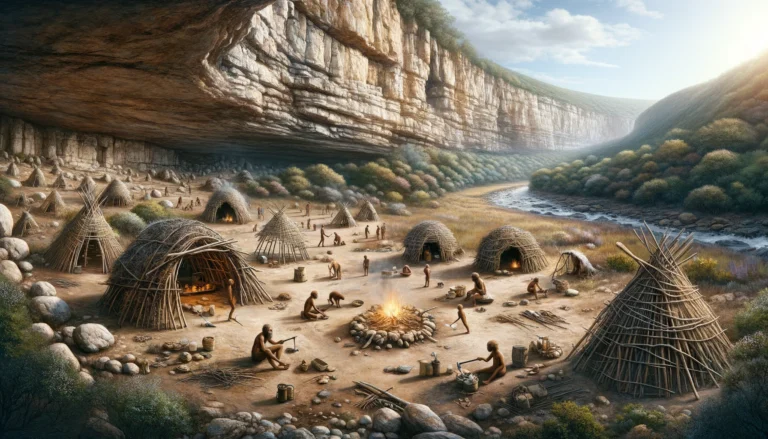Earliest known seasonal settlement in the Africa/Middle East zone: In the diverse and rich landscapes of what is now South Africa, the Klasies River Caves served as a vital seasonal haven for early modern humans.
Positioned strategically along the coast, these caves were revisited across generations, suggesting a shared understanding among different groups about the benefits of this location. The community constructed simple yet effective shelters from branches and animal hides just outside the cave entrances, creating a setup that supported daily activities such as tool crafting, hide preparation, and communal cooking over open fires.
This pattern of seasonal settlement allowed for the efficient exploitation of local resources, minimizing the need for constant movement and enabling a more sustainable living arrangement. It fostered not only survival but a thriving community life where knowledge, skills, and social bonds were developed and strengthened.
The archaeological remains and artifacts from the Klasies River Caves—ranging from sophisticated stone tools to evidence of hearths and human remains—illustrate a complex social structure that predates agricultural societies. These findings highlight the ability of early humans to adapt to their environment through cooperative behaviors and strategic planning, showcasing a level of communal life and environmental management that speaks to the enduring human spirit and intellectual vigor comparable to that of contemporary societies. This site provides a profound glimpse into one of humanity’s earliest known attempts at semi-permanent living, underscoring the sophisticated social dynamics that underpinned pre-agrarian human settlements.
Imagined Image: The image of the semi-nomadic people of South Africa depicts a group of up to 50 individuals congregating here around 100,000 years ago, establishing a semi-permanent settlement that utilized the natural shelter provided by the caves and the abundant resources of the surrounding area.
.











